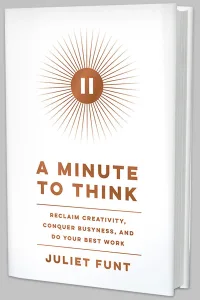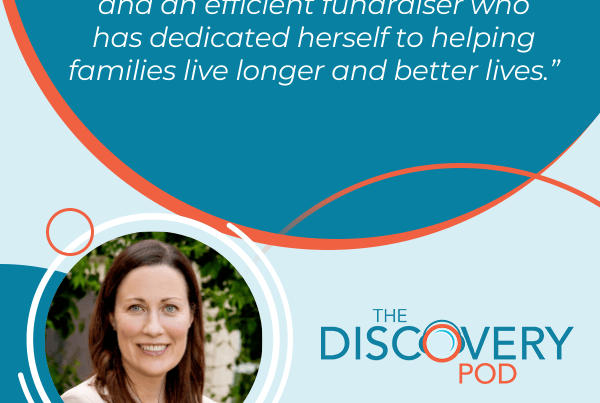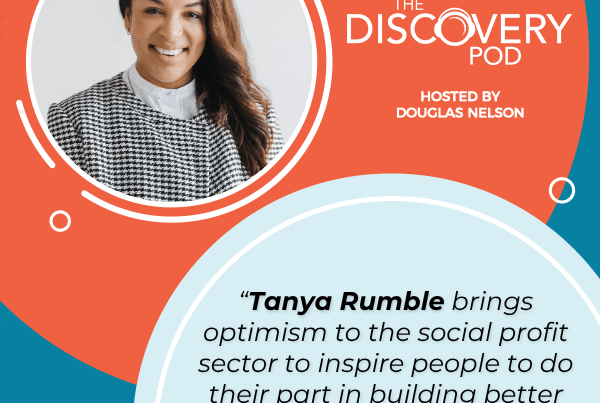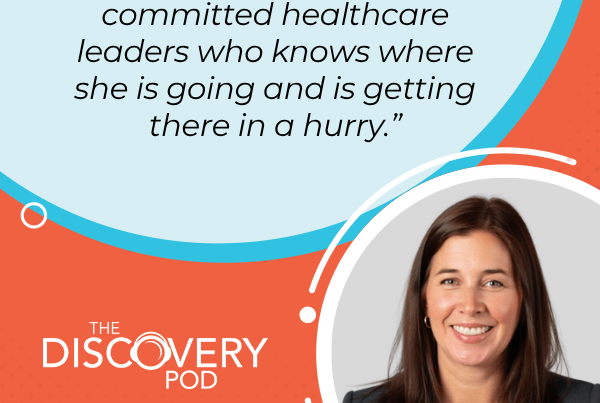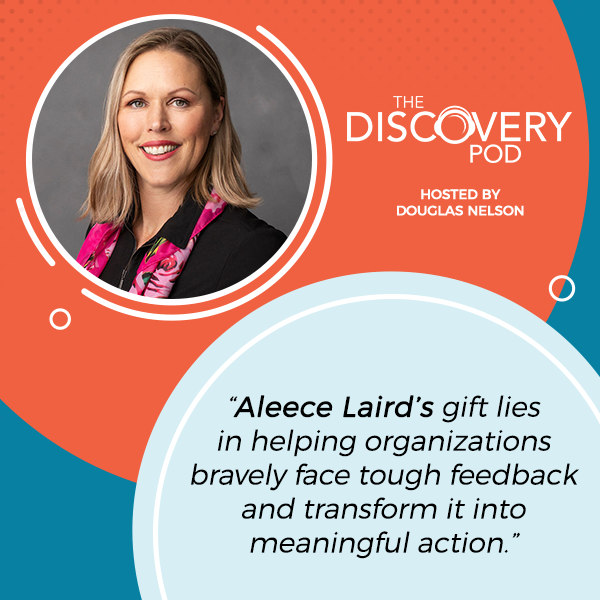
Community engagement and strategic communication are essential for building trust and a lasting reputation. In this episode, Aleece Laird, CEO of Amplify Consulting Inc., shares her insights on helping organizations connect with their stakeholders and turn feedback into meaningful change. She breaks down the three key steps to effective engagement: being brave enough to hear the hard truths, knowing what you want to learn, and being ready to act on the results. Aleece’s thoughtful approach and deep experience working with nonprofits, foundations, and communities make this conversation a must-listen for leaders looking to build lasting impact.
—
Listen to the podcast here
Amplify Consulting Inc. With Aleece Laird, CEO
For this episode, we have Aleece Laird. Aleece is the Founder and CEO of Amplify Consulting Inc.. I wanted to have Aleece on to talk about three issues we see our clients dealing with on an on-again and off-again basis across our entire social profit sector. The first is reputation that’s building it, sustaining it, and repairing it in the case of something going wrong. The second is meaningful, effective engagement, whether that’s engaging the community you serve or soliciting support from the community that supports your organization.
Finally, crisis communications. When something has gone wrong, whether it was within your control or not, regardless of who’s to blame organizations can find themselves in the crosshairs of media attention and those that respond well are those that thrive. Those that don’t respond so well, wish they’d call Aleece Laird. Aleece is a friend of the sector. We met working with a client, Veronica Caroll at the Children’s Health Foundation of Vancouver Island. Shout out to Veronica. Our conversation is an exploration of these three issues that matter intensely at moments of crisis and our social profit sector. Thank you so much for reading.
—
Welcome to the show, Aleece.
Thank you for having me, Doug. I’m very excited to be here.
I’m excited to have you here. We met a number of times and talked and wanted to have you on the show. We’ve got a great friend Veronica Carroll at Children’s Health Foundation of Vancouver Island. That’s where I first became aware of your work and the work of Amplify. Why don’t we start the conversation that way? Tell us a little bit about Amplify in the work that you do and the clients that you work with.
Amplify’s Mission: Building Reputation Through Communication
I’m appreciative that Veronica is a mutual friend of ours, which is thus why I’m here getting an opportunity to meet with you. I own a company called Amplify Consulting Inc.. We have been in business, depending on when this episode runs. March of 2025 will be our 8th year. I used to own advertising agency for many years before that but I wanted to get into the company of Amplify and start it because we’re all about communications and stakeholder engagement, which gives us an opportunity to dive a little deeper into asking strategic questions on behalf of our clients to help form their communication strategies.
The ultimate outcome is to help build their reputation so that they continue to be able to pull information through engagement and share information through communications. That’s what we do. We’re boutique. We’re small but we operate with amazing clients throughout Western Canada. There’s no shortage of the need for communication, so we remain quite busy working on some fun projects.
One of the things that jumped out at me of the work that you did is with Children’s Health Foundation of Vancouver Island. It was that community engagement process. I know you’ve done that a couple of times there. What I see in our work at the Discovery Group is often clients and organizations genuinely wanting to understand what their essential partners want to know what they’re expecting of them. They want to show up in the best way often most respectful way with dignity for themselves and for those that they serve or seek to serve but they don’t know how.
The intention is all there. The skill set and the resources to do effective community engagement often aren’t within organizations in the social profit sector, which is where I know that you and Amplify come in to that. If you were talking to a CEO who’s wanting to get it right this time when it comes to community engagement relative to the services they support and the funds they provide. Where do they start?
The First Step To Community Engagement: Be Brave
The first start by being brave and engaging. That’s honestly the first step, and not being afraid of what you’re going to hear. It’s a bit of a mind shift, to be honest with you, for somebody to become vulnerable and open themselves up to some challenging questions and answers back. As long as you have that mindset where we’re going to hear the good, bad, and ugly, and we’re good with it. That’s step number one. Whether you’ve capacity or budget, all of those things aside, you as a CEO, executive director, or leader, or whatever that looks like. You have to be brave and engage.
If you don’t have that mindset, it’s not going to be successful because the questions that we ask, and the invitations to engage with people, you don’t want to be engaging all of your fans. You want to be able to engage people that represent others who are maybe contrarians who may have a challenge with your organization or a nonprofit because you get a full picture of what that looks like. The first part is that that opening yourself to being vulnerable piece as a leader. That’s number one.
I would say the next is understanding what you want to understand. Why are you doing this? Thinking about that as well, what are you going to do with the information that comes back? I can tell you there’s nothing worse than going out engaging with people, hearing what they had to say, and not doing anything about it or not getting back to them on what the next steps are. There’s a large chain that when you go shopping there, on their receipt it says, “Enter to win $1,000 gift certificate,” just for filling out a survey, but they don’t communicate back that someone has won this. You don’t know if it’s valuable for your time.
There's nothing worse than going out, engaging people, hearing what they had to say, and then doing nothing about it. Share on XThe same is with when you engage stakeholders. If they’re investing their time, often they invest time and emotion. They become vulnerable as well. If you’re not prepared to do anything with that information to either make change, or to be a better communicator, and clearly communicate what it is you’re doing, then that’s almost like opening a can of worms as well. You want to make sure you’ve got that mindset correct. You have that capacity and willingness to engage, and understanding that you need to do something with that data that you’ve now collected to create some a change or something moving forward.
I have to say, we’re working on a project with Veronica in the Children’s Health Foundation of Vancouver Island. It’s the third one we’ve worked on, but it’s been great working with this organization because they’ve implemented recommendations. They’re great at communicating back to people where they are in the process of the information they received and what they heard key themes. You create these alliances and these partners with your stakeholders. The next time you go out to ask those strategic questions, it’s an, “Yes, we want to participate.” As opposed to, “I didn’t see any value in it last time.”
I want to go back to that first step, be brave. I hope this doesn’t sound too cynical. It’s easy for a new CEO or a new leader of an organization to be brave because they don’t own what has come before them. It may be harder for someone who’s been enrolled for 5 years or 10 years and to say, “This time, we’re going to do it right.” What needs to be in place for that bravery? When you see people finally tip over and go, “We’re ready,” what are the elements that contribute to being ready to be brave?
What It Takes To Sustain Engagement Long-Term
Most organizational leaders have an understanding that not that something is necessarily wrong, but things could be done better. That’s usually one of the scenarios in which they want to engage stakeholders to have a better understanding. The other is that they’re trying to solve a problem that they want feedback on because there are oftentimes, where organizations are creating an initiative or program. They understand what it is based on being the service provider, but they don’t understand what it would be like to be the one experiencing it or being the one contributing to it.
If you can understand how this is going to come across from people who would be receiving the service and also understanding what it would be like to be someone as a collaborator who could help deliver that service so being a part of it. You don’t have that perspective or that lens. By engaging stakeholders and asking those questions, you broaden your horizons. You can see your project through the eyes of somebody who would be receiving a service or product or contributing to it.
Sometimes, CEOs have that like, “Something’s not quite feeling right,” or they want to create something new and want to go out and engage. With most organizational leaders, CEOs, or executive directors, they have a mandate their board has given them. There’s this vision. If you are a thoughtful CEO, you want to be constantly engaging stakeholders. It shouldn’t be like, “We engaged once and we check that box and we’re done.” It should be a part of your regular rhythm to be reaching out because none of us know everything. It’s great to have that valuable insight of the people that you collaborate with and the people that you serve.
If you are a thoughtful CEO, you want to be constantly engaging stakeholders. Share on XNow, I want to jump to the third part, which is, you need to be able to do something with the information. Maybe I even counted this and maybe you haven’t. Feel free to say that doesn’t happen. Organizations say, “We want to have these conversations with this group of partners. We want to engage them.” We’ll see what they say and decide what we’re going to do next, which from my perspective often is a recipe for failure.
There’s a lot of opportunity to find a reason not to do anything with what you find if you’re not committed to it. You are not going to ask the best questions if you know what you want to understand or understand. What advice would you have for organizations that are thinking about, “How are we going to action or how are we going to take action on what we find?
It comes at the very beginning of the engagement before you even start engaging with stakeholders. It would be more along the lines of, what do we want to learn, what do we want to better understand, and are we going to be comfortable with information if it comes back if it’s negative or things that we don’t want to hear that we need to change and are we willing to make that change? If that is what we’re hearing loud and clear, are we willing to do that?
If organizations aren’t willing to make change and it’s based on whatever we hear back, then we’ll make the decision. I advised them not to move forward until they’re ready to implement a change potentially. Sometimes, people get scared. That’s the bravery part. People get scared that they think there’s going to be these massive changes, but it’s so interesting when you hear the feedback, especially CEOs or executive directors who have their finger in the pulse of their organization.
A lot of the information, key themes, and recommendations that we provide that come back aren’t Surprise to them. Not if they’re out in community talking to people. If they’re a real part of the community, which we hope that they are. A lot of it is not going to be surprised, but when we have these opportunities and we present to stakeholders the opportunity to participate and share maybe little things. It can change the trajectory of an organization because sometimes, there are things that CEOs and executive directors and their senior leadership don’t see that can make an impact and make all the difference in what they’re doing.
You have to be open to it. If you’re not quite ready, don’t do it. That would be my advice. I should clarify. A stakeholder is a big fancy word, but a stakeholder in my definition is anyone who has a stake in an organization. They either impact the work of the organization or impacted by the work of the organization. When you work with First Nations, you need to understand and respect that First Nations are rights holders. Knowing that difference is important as well.
I have one more question on those three steps. I have been on an executive team that did an extensive consultation and got information back. The intent to act was sincere and true and the resources were there to do it. The results were ambiguous as to what the best way forward was. How would you work with an organization that 60% of the folks we talked to want you to go down path A and 40% want you to stay right where you are?
Handling Mixed Feedback: Keep Digging For Clarity
I would keep engaging and ask more clarifying questions. I would continue to dig a little deeper because nobody wants to guess. You don’t want to go, “We’ve got a slim majority of people who are saying this.” I would recommend to a client like, “Here’s what we’re hearing. Let’s dive a little bit deeper into this topic so that we can find that true clarity. You don’t want to start making those assumptions either based on what you’ve been hearing back.” You want that clarity.
It’s interesting because when you do this work, you start out and you start hearing a variety of feedback. You, as someone who doesn’t engage, you’re like, “This is all over the place. Where is this going?” It starts to crystallize because the more conversations you have of whether people participated in online survey, a focus group, a Zoom meeting, or one-on-one. You start to see that crystallization of the key themes emerging. That’s when you know you’re right on the right track then you keep picking up rocks and looking under them to make sure that you’re on the right pathway. If you are in a spot where you don’t have that clarity, keep digging. Keep turning the rocks over.
That’s right. We do work with organizations around campaign readiness. We do a market survey, and go talk to a number donors about their views of the organization, the urgency of the case and willingness to support it. One of the things that we often hear when we present the results to boards is, are you 100% sure this will work? No. That’s not a thing, but you can never be 100% sure.
You can do a lot of good work to be fairly certain or certain that it will work if you are willing to make the Investments and do the work and be patient enough to be successful. A lot of that is true in stakeholder engagement as well. You’re never going to get 100% certainty or 100% unity in the questions you’re asking. You can be confident that you’re making the right decision and the decision is going to serve the most people, if that’s what you’re doing.
You’re asking people. Again, those who impact an organization or impacted by it, you’re asking for their feedback and you’re asking them for their perception. Oftentimes boards, which is a good example. You’ve got well-meaning people who have a certain way of thinking. What stakeholder engagement can do is, if you think of like a horse with blinders. It’s almost like you expand the blinders a little bit more or you take them off so that they can see the full picture. It helps them then make decisions, and this is where engagement is so great for strategic planning.

Amplify Consulting Inc.: Stakeholder engagement can help them see the world or the organization through the eyes of the people who are impacted by the organization.
It helps them see the world or the organization through the eyes of the people who are impacted by the organization or who impacted. It can help them make much smarter decisions, not ones based on their own personal experiences, their own biases, or their own like, “We should go this way.” You’re giving them that that Insight that they need to make a better decision. I’m sorry for you. It’s the same with communications.
People will say, “If we do these communications, what’s the return on investment of these communications?” In a lot of work, we do help organizations build reputation. I struggle with that question. It’s difficult. I was at a board meeting once and they were saying, “If we do these communications, how do we know when we have a good reputation?”
I didn’t mean to be flippant, but I said, “You know when you don’t have a good reputation.” It’s hard to measure these things, but this is where you have the metrics in place. You do something. You test and you go, “This works this time. Let’s try it again. Let’s tweak things.” Always be looking at your data and that gives you good information for how to move forward next time more effectively.
The Role Of Reputation In Nonprofit Success
I’m glad you mentioned reputation because it’s something I wanted to make sure we got into in this conversation because we’re seeing in the philanthropic side of a real flight to quality. If you were donors, more money going to organizations that are successful and far lesser number of donors and dollars available for those that aren’t. That flight to quality comes down to credibility and reputation. It’s not that the organizations have a bad reputation. It’s just that they’ve never thought that was something they needed to pay attention to.
We worked with the organizations that have a pretty strong reputation in their community, but it’s never been connected to their philanthropic effort and they’ve got a lot of work to do that. What are the elements of reputation that you see as the biggest barriers or the challenges that organizations need to address as if they want to improve their reputation?
Building Reputation With The Engagement-Communication Triangle
The biggest barrier and challenge would be understanding that credibility, reputation, trust building doesn’t happen overnight. That’s hard. It’s really hard because you can take out a full-page ad in a major newspaper and run this massive advertising campaign to start building that awareness for your organization but that’s not what builds reputation. It’s showing up every day, doing what you said, having clear communications, relating what you do to the work that is happening so that donors in this case can see the benefits of where their money is going to go.
That’s the biggest thing. Start now. Start building your reputation right this moment. I like simplicity. How I put it is that, if you think of a triangle, reputation is at the bottom of the triangle. That’s the base. That’s the foundation of your organization. The right-hand side would be called engagement where it’s that full of information, which would be engagement. How are you engaging and pulling data and insight on a continuous basis from your stakeholders?
The other side of the triangle would be communication, pushing or sharing out information. You’ve pulled information. You understand your level of awareness, your perception, and your reputation. All of these things about your organization so that you can better communicate knowing that there are gaps in understanding. We have a gap in our reputation. You’re communicating more strategically. If you think of that triangle, then as you go forward over time and you’re consistent, the whole thing starts to rise.
Your reputation from that foundational piece starts to rise. You have a better chance of stakeholders wanting to engage with you because you’re trusted, credible, and got a good reputation. When they see something come out from you from a communication, it’s like, “I like that organization. They do good work that communication piece.” It’s this ongoing process. It’s so much based on common sense and putting in the work, being diligent, and always sharing those key messages of your organization and showing the proof of the work that you’re doing.
It’s so much of the work in the social profit sector. There are so many organizations are rooted in scarcity and that’s the biggest barrier to success in the sector and starting with want, gap, and need rather than abundance and success. Part of reputation is leading with what’s working about your organization and how your organization is effectively showing up in the community and doing that on a consistent basis.
We often encounter organizations that are genuinely needing to raise money or wanting to raise money to address a want or a need or provide service in a community that isn’t there or to a group of people that they serve that don’t have access to those services and lead with that scarcity. I found having grown up as a fundraiser, it’s challenging to raise money to fill gaps or to fill a hole that people didn’t know was there or people think you have to first tell them the gap exists before you can ask them for any money or to support it. You’re educating and fundraising in the same conversation which very rarely works.
Balancing Scarcity And Success In Fundraising
The organizations that are successful are leading with what they have been good at because we’ve been able to successfully address this issue. For this part of the population, we’re going to move and expand our focus to address those needs for an adjacent portion of the population. If they thought about their reputation, how would you recommend organizations find that balance between the genuine need and scarcity that is in the community that they’re trying to address and that need to position themselves as a credible response to that scarcity by demonstrating their abundance and their success?
One of the things that I point our clients to and trying to love the foundation of the reputation and the engagement in the communication. As we’re talking and you’re seeing me because we’re doing this. You can see my hand actions, but I know your readers can’t.
She’s making a very clear triangle for what’s it’s worth. It’s very clear.
Under the triangle of reputation are your core values. This is where boards of directors are critical to the success of an organization and setting it up for success. Being a part of, who are we? What is core about who we are and what we do? That’s what your reputation is based on. It’s based on who you are, then when you deviate from that, that’s where crises come up. People are like, “Who are you? You say you’re doing this.” That’s where the balance comes in.
Being authentic and true to who you are as an organization is how you build that reputation and that credibility, that engagement and reaching out. Once you continue to build that, and again it’s that long game. People are going to start to understand. They’re going to start to become aware. They’re going to start understanding that if you’re trying to address this need, you’re the organization to do that because you’ve got that credibility and sharing that information.
It’s hard, though, because you’ll have organizations who are like, “We’re doing a capital campaign and we need to do this.” Oftentimes, if organizations don’t have a good reputation, it doesn’t matter how much money you do spend on a capital campaign on male pieces, communications, or advertising. Building that first is going to be the most critical component of what you can do for the long-term success of your organization.
If you don’t have a strong reputation in that trust and credibility, it doesn’t matter what you do. It doesn’t, and it’s sad to say but it’s true. You can fill a gap for a bit. You can get some people at the right time. Fingers crossed it’s going to work, but that long game as an organization, having that reputation is what’s going to move the dial for you and to see those incremental growth over time to then fix that scarcity and fill those gaps with the work that your organization does.

Amplify Consulting Inc.: If you don’t have a strong reputation and that trust and credibility, it doesn’t matter what you do.
Your point about consistency is relevant in the sector to be able to show up as an organization in the same way consistently over time. Showing up as a leader as an individual consistently over a period of time. Seth Godin has an analogy that he uses about that. He said, “If you are a certain home services business and someone calls you on Christmas Eve.”
“They get a voicemail that says, ‘We’re closed on Christmas Eve. We’ll call you back on the 26th.’ That’s fine and understandable. Unless your brand promises will be available 24/7, in which case you’ve wrecked your reputation.” The same action could be understandable because you’ve talked about providing quality service or you’ve not made a timely and guarantee. If you’ve made that guarantee, you’ve wrecked it by closing for a couple days over a holiday.
Living Core Values For Long-Term Organizational Growth
When you talk about that promise and that’s a reputation. This is for myself and what I recommend for clients, it’s hiring based on your core values, too. For Amplify, we go over our core values as a team because I want our team to not just be able to list our core values but to understand how they work within our organization so that the service our clients are getting is consistent, which then builds our reputation.
Without any cheat cheater notes, our core values at Amplify are common sense. We don’t do things that don’t make sense for our clients, so, first is common sense. Next is creativity. We don’t offer cookie cutter solutions. It’s not like, “This worked for one client. We’re just going to continue to replicate it.” It’s always based on what are the outcomes they’re looking for and how we can creatively help them solve their challenges.
Integrity is another one. I know some people say that, “If you have the same integrity as a core value. That’s a challenge.” I love integrity as a core value because it’s that tether that keeps you being honest. It’s important. That’s a core value as a human, too. Having that integrity is so solid. Our last core value is flexibility.
We do a lot of crisis communications for our clients and sadly, crises don’t often arise like between 8:00 to 5:00, Monday through Friday. It’s usually Friday of a long weekend. Something is going sideways, and you need to drop everything and be flexible. That’s where of organizations dial in what their core values are, then they’re going to hire the right people who align with their core values. You’re going to have a better organization that is all growing in the same direction.
In the Discovery, we have three. It’s always be learning, be compassionate, and make it exceptional. We use all three of those as a way for our biweekly team meeting. That’s the framework we use for what are examples, either within our team or work that our clients have done or work we’ve done for our clients using them.
It’s interesting I find and I’m curious if you find the same thing. When it comes up to what your core values are as a company at Amplify and you’re using them in conversation because it’s part of who you are and it’s how you approach the word. The resonance that they have with clients is like, “That’s great.” We see ourselves in that value as a big part it. The number of clients that we work with who were running great organizations and are great leaders, who could not name their values is high. I would say, it’s greater than three quarters.
I would liken that, too. There’s a great book from Juliet Funt. She is called WhiteSpace at Work. She has a great analogy. This is more about time blocking and scheduling, but it relates to what you shared about core values and not knowing the vision or mission or whatnot and having those be a part of your daily thoughts of why you’re showing up to work. Juliet Funt talks about there’s a difference between an amateur and a professional mountain climber.
An amateur mountain climber will drive up to a mountain and will get all their gear on and start climbing. They’ll have to come back down and figure out another route when they get stuck then come back down and figure out another route. It’s time wasting and churning. A professional mountain climber will stand back and look at the rock face with the mountain and will map out where they want to go so that others understand where they’re going. They have much more success because they’ve stopped., thought about it strategically, and moved forward.
That’s a challenge of a lot of potential CEOs, executive directors, and leaders. The people that work with you, there are core values align with you. Hopefully, you’ve got the right people on board and they want to have that predictability, that certainty, and to know where you’re going. To not be clear on that yourself, and be living that daily and modeling that for your team, makes it a real challenge. Even from the time blocking aspect of what Juliet Funt is talking about to likening that to like, you as a leader, how are you showing up and living out your core values?
This is what our mission and our vision is. If you’re not doing that, you’re going to have people who are like floating around. That’s where it’s a challenge to build your reputation because you don’t have everybody in the same boat rowing in the same direction. I’m sure these companies are very successful, but could they find more success? Could there be more satisfaction from their employees who do the work because they know what we’re trying to accomplish together?
I would imagine having a good sense of the value if the organization play some significant role in whatever change you may need after you do a big broad community consultation. The work you do or how you do it may change, why you do it, and how you approach that work if you can know your value is and you know your organizational purpose won’t be changing it. They can act as a guide there.
If everybody needs to know their core values, listen to us. We’ve replicated LinkedIn on the show. It’s very true having worked for leaders who were rooted in their own personal values and the values of the organization, the speed with which you can build consensus for action and focus on execution is so much greater when those values and that value alignment is in place.
Personality is going to be different. If you’re motivations of why you’re showing up to work, specially in the non-profit sector, the social profit sector, the stakes are high. You’re trying to solve social issues and social challenges through the work that you’re doing and fill gaps. In the case of the Children’s Health Foundation of Vancouver Island, this work is so important and meaningful.
Sometimes, the work through Bare Essentials, if they’re providing funding to somebody for a tank of gas to get their child from Nanaimo to Victoria, who otherwise couldn’t make that medical appointment. That’s high impact stuff. You need to make sure that you’re being as effective as possible and as efficient as possible. You’ve got the right people on board who are driven and motivated like, “That’s why we’re here,” and they’re passionate about it. That shines through for donors as well.
Hearing you say that, a new note comes out for me that we didn’t talk about, but that was being genuinely curious like wanting to know the answer accounts for a lot. How do you understand an organization or leader wants to know the answer?
It comes down to a conversation. We’ll have organizations reach out to us. I get very curious and I’m like, “What are you helping to accomplish with this? Is this just a check-the-box exercise, or are you going to be doing something with this? You can find out a lot from people.
Nobody ever says, “This is a check the box.”
I usually don’t say it’s a check-the-box exercise, but through conversations, we figure out if they are in it for real and what they’re going to do with it. There are other organizations or you can do your own work if you want. You’re just trying to like, “We check. We talk to people. I would rather a nonprofit organization either do the work on their own or don’t do it. Save the money and spend it on something valuable for a family.”
It’s finding out that intent. It can be tricky, but it’s worthwhile because with our team, we all have the same core values. We all want to have that Amplify that impact of the organizations that we work with. It doesn’t make you feel good if you’re helping an organization who’s doing it just for show. We want to make sure that you’re doing something that has impact.
It doesn't make you feel good if you're helping an organization who's just doing it for show. You want to make sure you are doing something that has absolute impact. Share on XI’m sure you hear organizations say, “We’re not doing this just to check the box.” “You’re good. Why are you doing it?” We hear in strategic planning quite a bit and we asked, what strategic plans or tools have jobs? What job do you need the strategic plan to do? I would say not 100% of the time, but pretty close, someone in the room, especially if you’re talking to the board. They’ll say, “We don’t want to plan that will just go on a shelf and gather dust.”
There’s that deep association with strategic planning that that’s the likely outcome. No one wants that. No one ever goes into the process thinking, “You know what we’ll do. Get together for a weekend. We’ll make some decisions. We’ll make a pretty picture, and then we’ll never think about it again.” Some organizations end up doing that but that’s not their intention at the outset. There’s so much of the work that you do with your clients and work we do with our clients is helping them connect their intention to the work that they’re doing on a daily basis.
The Power Of Consistency And Strategic Implementation
That implementation piece because that’s the thing. Someone said to me as they were talking, it’s like, “Strategy is important but implementation is magic.” It’s so important to make sure that you can have a fantastic communication strategy. You could have an awesome stakeholder engagement plan put together with recommendations and next steps. If you don’t implement it, it’s like any weight loss or fitness thing that you do.
Everyone can sign up January 1st and be like, “I’m going to be the fittest ever,” but if they don’t have a game plan and people holding them to account as well. It’s hard when there are other things that take priority to keep focused and keep going. Once you start seeing the difference, and it’s like in a Simon Sinek talking. It is like, “When are you fit? When do you become fit? Is it just one day you wake up and your fit? No.
You put in the work. You do a day after day. You get better and better, and at one point in time, you’re like, “I have achieved this fitness.” You want to continue to maintain, but it’s not an overnight thing. Usually, it’s not like you turn on the light and hear you are. It has to be something that is intentional and again that consistency of doing the same strategic thing over and over again so you can see those changes. Measure them and make sure they’re working and adapt as needed.
It’s true of engagement, reputation, and a lot of things. It’s great way. As we come to the end of the conversation, Aleece, I get to ask my favorite question. What are you looking forward to?
Looking Ahead: Personal And Professional Growth
I’m looking forward to a lot of things. Is that a good way of putting it? I’m not looking forward for my boys moving out of the house quite yet, but that will be on the horizon at one point. I’m looking forward to them coming to their own. Our one son just got his red seal in welding and he’s going to into heavy duty mechanics. Our other son is training to become a pilot and has now a student pilot’s license. He had a bucket of water dumped over their head. Apparently, that’s the thing after your first solo flight.
I’m looking forward to seeing how my children go into the world and make a difference. For the work that we do at Amplify, I’m looking forward to doing more of that great work, meeting new people, helping organizations, and looping back with other organizations that we’ve done work with to continue helping them engage in communicate. That’s what I’m looking forward to. I feel like I’ve got a nice consistent life which is a good spot to be in.
Aleece, you do exceptional work and having been a consultant working in tandem with you with an organization, it was a real pleasure to see the quality and the consistency of the work that you did and how you helped advance that organization. I appreciate you sharing some of your insights and wisdom with us. Thanks for being a part of the show.
Thank you for inviting me to be a part of the show.
Important Links
- Aleece Laird on LinkedIn
- Aleece Laird on X
- Amplify Consulting Inc.
- Children’s Health Foundation of Vancouver Island
- Juliet Funt Website
About Aleece Laird
 CEO / Communications & Stakeholder Engagement Specialist
CEO / Communications & Stakeholder Engagement Specialist
Founder of Amplify Consulting Inc.
With a lifelong passion for engagement, Aleece Laird brings over 15 years of expertise in communications, stakeholder engagement, and strategic planning. As the co-owner of an advertising agency for 13 years, Aleece has cultivated a deep understanding of how crucial it is to go beyond surface-level information. By digging into the heart of an organization through research and stakeholder engagement, she uncovered hidden opportunities for efficiency, growth, and addressing key concerns.
This invaluable insight became the foundation for launching Amplify Consulting Inc. in 2016, where Aleece has since focused on helping organizations amplify their impact by starting with meaningful conversations. She believes that strategic, well-timed engagements unlock pathways to deeper collaboration, providing organizations with rich, actionable insights that inform and enhance their storytelling.
Aleece’s commitment to stakeholder engagement has made her a trusted expert in understanding what drives true organizational success, guiding clients through the process of identifying challenges, uncovering opportunities, and driving sustainable growth.

